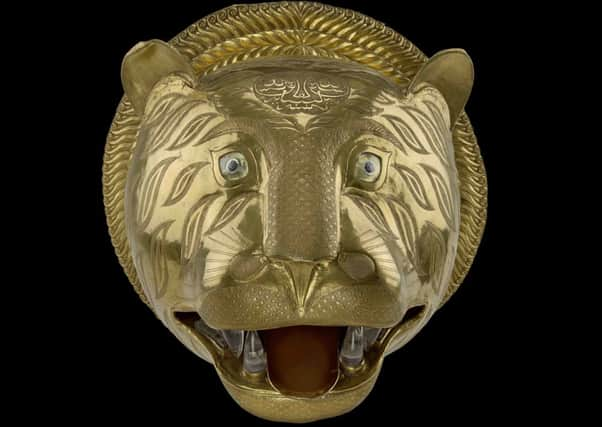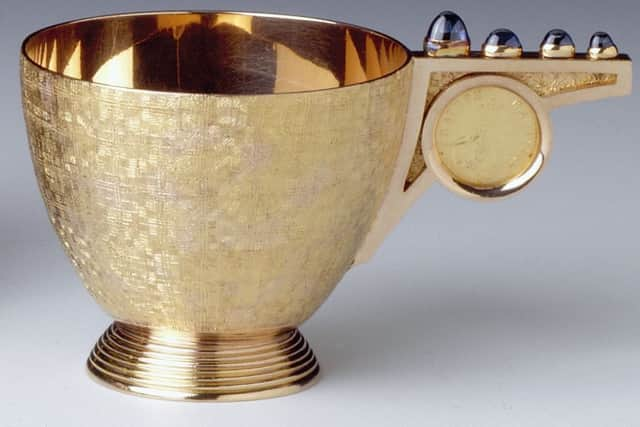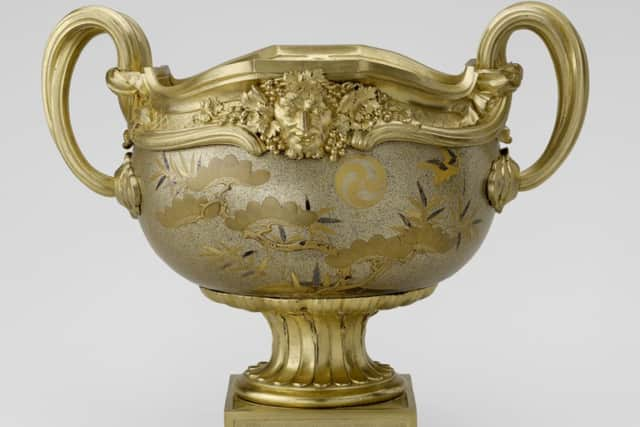Exhibition of gold treasures set for Edinburgh


Later this month Gold, a major exhibition of royal treasures, opens in Edinburgh celebrating objects from the Early Bronze Age to the 20th century.
The display at the Queen’s Gallery at the Palace of Holyroodhouse features more than 60 items from the Royal Collection, with many going on show in Scotland for the first time.
Advertisement
Hide AdOne of the most striking items in the exhibition is a tiger’s head in gold and rock crystal from the throne of Tipu Sultan (1785-93), ruler of Mysore in India.


The sultan, a fearsome warrior who spent most of his reign fighting the British, took the tiger – the ancient symbol of leadership in India – as his own, declaring “it is better to live a single day as a tiger than a thousand years as a sheep”.
Another fabulous treasure on show is the Bronze Age Rillaton Cup, made between 1700-1500BC.
The cup, beaten out of a single lump of gold of high purity, was discovered in 1837 after workmen engaged in construction plundered a burial cairn for stone on Bodmin Moor, Cornwall.
They opened a stone kist to find a human skeleton, the gold cup and a bronze dagger.


Kathryn Jones, curator of decorative arts at the Royal Collection Trust at St James’ Palace in London, said the wide range of items, ranging from those of historical, religious to personal significance, illustrated the universal appeal of gold.
Advertisement
Hide AdShe said: “Gold has an aura which people are drawn to. It resonates all over the world and has done so through every era.
“It has so many aspects – the colour is like sunlight, it never tarnishes. Traditionally, people thought it a very pure, almost mystical thing, like a rare, living entity. People are aware of how precious it is, when we consider the goldrushes in history and the hardship involved in obtaining it.
Advertisement
Hide Ad“But it has universal appeal such that for many people even owning a small amount of gold, like a wedding ring, is something special. We’ve picked out items for the exhibition which show how the artists and goldsmiths over the years have tried to draw out its innate qualities.”
Ms Jones added that one of the more personal royal items going on show was Queen Alelaide’s Chinese-inspired fan, dating from around 1830.
“She’s not a particularly well-known person in the royal family. The fan gives us an idea about her tastes – it is very delicate, very glamorous, but restrained.”
A modern item with a Scots theme which has rarely been seen in public is a solid gold cup shaped like a thistle, made by Gerald Benney in 1978.
Gold shows at the Queen’s Gallery, Edinburgh, from 27 March-26 July.
FOLLOW US
SCOTSMAN TABLET AND MOBILE APPS